Ten top tips for taking a wound swab
<p>In this practical guide, Rose Cooper offers tips for when and how to take a wound swab, using an established technique.</p>
A new treatment for the management of a chronic venous leg ulcer
<p>This case study highlights the challenges of managing a patient with a hard-to-heal wound and lymphoedema. It explores the use of an advanced wound care treatment together with a holistic approach to care, which has led to a significant improvement in the patient’s quality of life.</p>
Technology update: Understanding the role of PHMB: a topical approach to wound infection
<p>The practice of wound cleansing has become a basic principle in modern wound management, where it forms part of the process of wound bed preparation. Cleansing, debridement and disinfection help to reduce bacterial load in the wound and gently remove debris and exudate to prepare the wound bed for closure. This article focuses on the […]
Innovations in the care of leg ulcer patients in Australia
<p>This short report describes the recent introduction of new models of care in Australia aimed at disseminating the evidence base for leg ulcer care to health professionals. These innovations have contributed to the establishment of a Cooperative Research Centre with researchers, health professionals, health service and industry partners.</p>
Things never stand still
<p>Suzie Calne reports on a number of new launches for Wounds International.</p>
Wound care education in Romania
<p>In this guest editorial, Irene Anderson describes her experiences of running a wound care course for nurses and doctors in Romania.</p>
Innovations in venous leg ulcer management
<p>This paper describes recent research in the field of venous leg ulcer management. It provides an overview of the most important randomised clinical trials and meta-analyses of studies in this specialty. It suggests that compression therapy remains the most effective treatment, but that clinicians should be open to other therapies, particularly those that seek to […]
Using a minimally invasive treatment for venous reflux
<p>This paper describes endoluminal thermal ablation, which is used in the treatment of varicose veins and offers a less invasive treatment of venous reflux in patients with venous leg ulcers.</p>
Management of burns in the community
<p>Burn injuries pose a significant burden to the NHS with 250,000 patients presenting annually to primary care teams and a further 175,000 presenting to A&E (National Burn Care Review, 2001). The large majority of these patients are managed in the community by healthcare professionals who may have limited experience or lack formal training in burn […]
Meeting the need for global wound care education
<p>I am delighted to report that the launch of Wounds International has been very well received by clinicians and industry, confirming that there is indeed a genuine need for a ‘journal‘ providing short, interesting, reliable and relevant content that is free and easily accessible to clinicians all over the world.</p>
Improving outcomes in patients with diabetic foot complications in Tanzania: a model for the developing world
<p>This short report describes the problem of foot complications in patients with diabetes in Tanzania. It focuses on the scope of the problem, the barriers to effective care that have led to this situation and the introduction of an integrated programme for improving outcomes, involving active surveillance, microbiology and staff training.</p>
Technology update: Understanding foam dressings
Foam dressings are highly absorbent and are available in a range of different shapes, sizes and compositions. They can be used as a primary or secondary dressing on a variety of wound types, from leg ulcers to cavity wounds where exudate is a problem.
Innovations in diabetic foot care: Using a wound healing timeline for advanced therapies
<p>Diabetic foot ulcers and associated wound care methodologies have been the subject of rigorous research during the last decade. It is important for clinicians to educate themselves on the latest therapies and incorporate them into wound care protocols appropriately. This report reviews innovations in diabetic foot care from a US perspective and provides a guide […]
Innovative approaches to diabetic foot care in Italy
<p>This short report reviews recent advances in the management of the diabetic foot in Italy and the importance of an integrated approach to care. It focuses on the work of the Diabetic Foot Clinic at the University Hospital of Pisa, which has contributed to research into offloading devices and the use of antiseptics. This has […]
A paradigm shift is needed in diabetic foot care
<p>This short paper explains why clinicians should place greater emphasis on the management of diabetic foot ulcers of neuroischaemic origin. It also calls for a new classification system to help decide when vascular intervention is necessary in patients with neuroischaemic ulcers.</p>
Managing a neuropathic diabetic foot ulcer in rural Australia
<p>This case study highlights some of the issues involved in managing a patient with a neuropathic diabetic foot ulcer in rural Australia, and explores the importance of concordance, patient and healthcare professional education and a multidisciplinary team/clinic approach.</p>
New advances in pressure ulcer prevention and management: an Australian perspective
<p>This short report describes how innovative research helped to standardise data collection for pressure ulcer prevalence in Australia. Adoption of this approach and the implementation of national guidelines in 2001 led to reduced pressure ulcer rates and to several state-wide prevalence surveys. New data collection tools, including the use of mobile phone technology for immediate […]
Postoperative management of a diabetic foot ulcer in Saudi Arabia
<p>This case study focuses on the postoperative care of a man with a diabetic foot ulcer. It describes the wide-ranging effects that foot ulceration can have on psychological and social wellbeing, and emphasises the need for multidisciplinary care.</p>
Innovative approaches for improving diabetic foot care in India
<p>This short report discusses the problems of delivering high quality diabetic foot care in India and looks at recent innovations developed at a research centre in Lucknow. The introduction of simple, affordable approaches has been shown to provide practical solutions for people with diabetic foot problems. These include an easy to use offloading device and […]
Lymph/lipoedema treatment in its different approaches
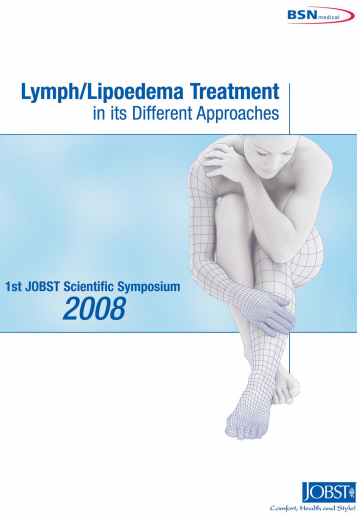
The challenges of providing effective treatment for patients with lymphoedema-related disorders have never been more prominent. Conservative management of lymphoedema remains of central importance, however, there is increasing evidence that other therapies, such as surgical approaches, may have an important part to play in the arena of treatment. The findings from these proceedings highlight the […]
Vacuum Assisted Closure® in paediatrics and young people: a consensus document
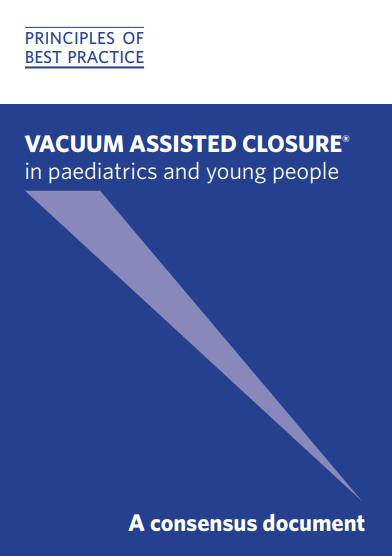
Although ample published evidence exists regarding the use of Vacuum Assisted Closure‰ (V.A.C.‰ Therapy) in adults, there is little published evidence and much confusion relating to the use of this treatment modality in children. Recognition of this problem prompted the formation of a group of experts who conducted literature reviews, consulted patients, carers and colleagues, […]
Pressure ulcer prevention: can dressings protect from pressure ulcer damage? An advertorial
<p>Using dressings such as an absorbent soft silicone self-adherent bordered foam dressing (Mepilex Border Sacrum, Mölnlycke Health Care) to protect vulnerable areas – particularly the sacrum, pelvic area and heels – of patients at risk of developing pressure ulcers is a relatively economic and practical means of reducing pressure ulcer incidence.</p>
A new online journal for clinicians around the world
<p>Wounds International is a new online wound management journal that provides clinicians with reliable and useful material that will give an instant update of all the most important current developments in wound care. Being an online journal, Wounds International will constantly evolve, whilst introducing up to the moment content for everyone in the field of […]
Learning through research: The paper that changed my life
<p>Mike Clark chooses a paper by Reswick and Rogers (1976) that attempted to determine how long patients could withstand a static posture without developing pressure ulcers. This is reviewed by Amit Gefen.</p>
Innovations in pressure ulcer prevention and management: Key initiatives introduced in Japan
<p>This paper is one of three examining innovations in pressure ulcer prevention and management. Among a number of fascinating innovations introduced in Japan, the problem of how to prevent pressure damage in patients with an extreme bony prominence is discussed.</p>
Innovations in pressure ulcer prevention and management: New international guidelines for best practice
<p>This short report describes the development process and key recommendations of the new international pressure ulcer guidelines for prevention and treatment developed by EPUAP and NPUAP. Further key research and practical implications for pressure ulcer prevention and treatment are discussed.</p>
The use of granulated sugar to treat two pressure ulcers
<p>This innovative case report presents the management of a patient with two infected pressure ulcers, one on the heel and one on the sacrum, using a granulated sugar dressing.</p>
Innovations in pressure ulcer prevention and management: Targeted interventions that reduce prevalence
<p>This short report presents recent initiatives in the US and Canada and around the world for targeted pressure ulcer prevention and management. Prevention is key and the focus needs to be on early recognition of patients at risk and the implementation of targeted interventions, with an emphasis on the effective management of chronic illness.</p>
Technology update: Understanding hydrocolloids
<p>Over the past 30 years a plethora of advanced wound dressings have been introduced. Hydrocolloid dressings have led this woundcare revolution and helped clinicians recognise the importance of moist wound healing. Today, hydrocolloid use has become routine and the dressing evolution has led to the development of other dressing technologies.</p>
The autolytic debridement of venous leg ulcers
<p>Wound debridement is part of the wound healing process that may occur without intervention, but more often, assistance is needed. It is important to recognise the situations when debridement is not appropriate. This article will describe how to recognise dead tissue that should be removed from the wound, when debridement should not be attempted and […]
What you need to know about skin grafts and donor site wounds
<p>Skin grafting is used for extensive wounds that are difficult to suture or for wounds that will produce prominent scars that could cause physical or psychological problems for the patient. Grafting involves the creation of another wound at the donor site that will also need nursing attention. In this article, the different types of grafting […]
Understanding cellulitis of the lower limb
<p>Patients with leg ulceration are at risk of developing cellulitis, a potentially life-threatening bacterial infection of the skin. It is vital that the clinician can recognise the symptoms and differentiate them from other conditions of the lower limb. An understanding of when to initiate appropriate treatment promptly is essential to minimise distress and pain and […]
Template for practice: Compression hosiery in lymphoedema
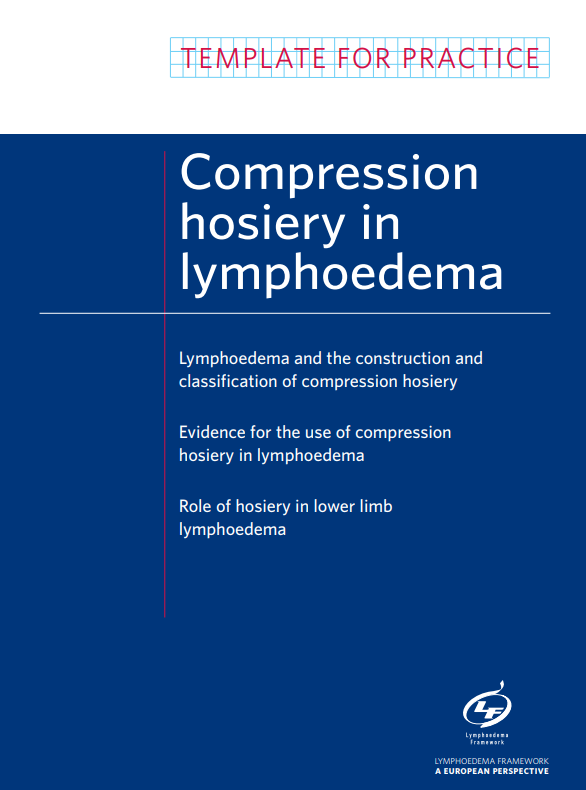
This is the first document in a template series launched by the Lymphoedema Framework which aims to enhance the care of patients with lymphoedema by providing concise, relevant and highly practical information. Supported by BSN Medical / Essity
Lymphoedema bandaging in practice

This European Wound Management Association (EWMA) document focuses on lymphoedema bandaging in Europe and is intended to form part of an educational campaign that will facilitate consensus in lymphoedema practice across Europe. Supported by L&R
Best Practice for the Management of Lymphoedema: an international consensus
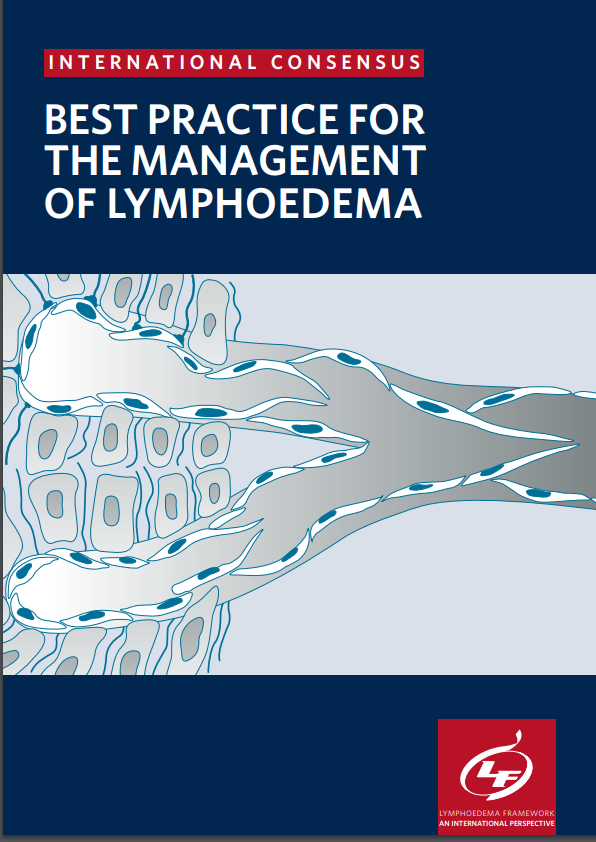
The Lymphoedema Framework presents a model for best practice in lymphoedema in adults with the aim of raising the profile of the condition and improving the care that patients receive. Supported by Sigvaris
Hard-to-heal wounds: a holistic approach: EWMA Position Document
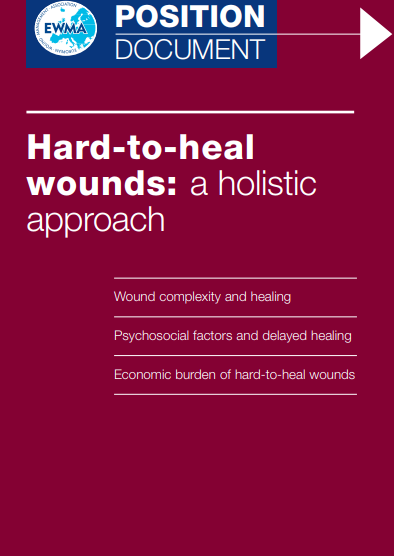
The document examines wound complexity, psychosocial factors and the economic burden of hard-to-heal wounds. It is the seventh position document produced in association with the European Wound Management Association (EWMA). Supported by KCI – An Acelity Company
Topical negative pressure in wound management: EWMA Position Document
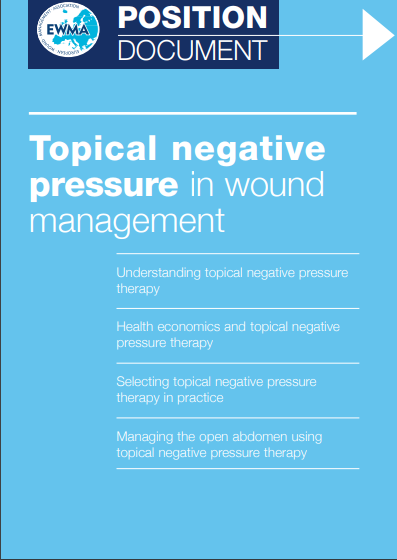
This is the sixth position document produced in association with the European Wound Management Association (EWMA). Supported by KCI – An Acelity Company
Wound bed preparation in practice: EWMA Position Document
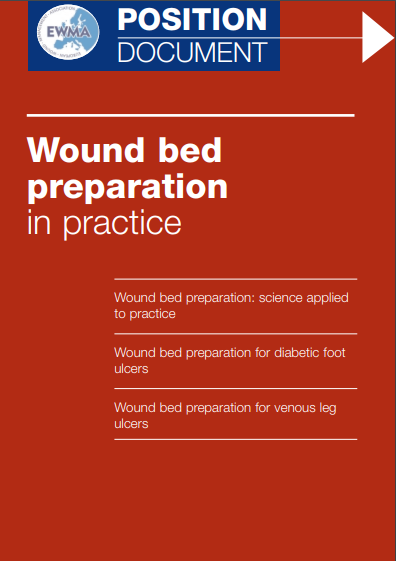
This document arose out of the need to focus on the factors that influence healing and why a significant proportion of chronic wounds fail to heal, even with the highest standards of care. Supported by Smith & Nephew
Understanding compression therapy: EWMA Position Document
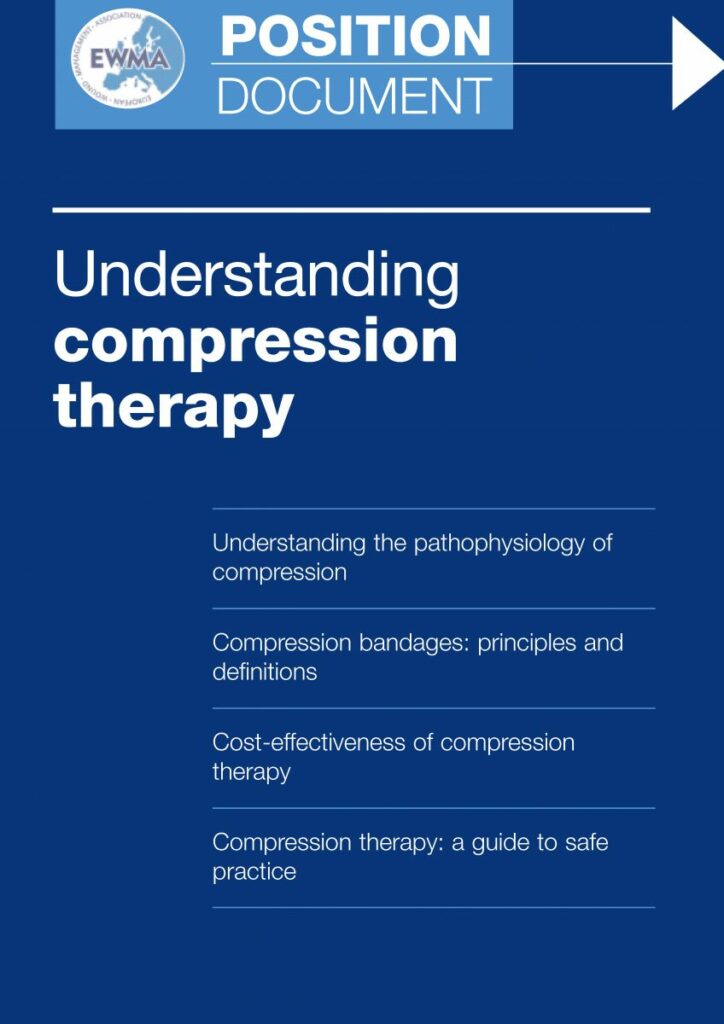
This is the second position document produced in association with the European Wound Management Association (EWMA). Supported by Smith & Nephew
Best Practice Statement: Gauze-based negative pressure wound therapy
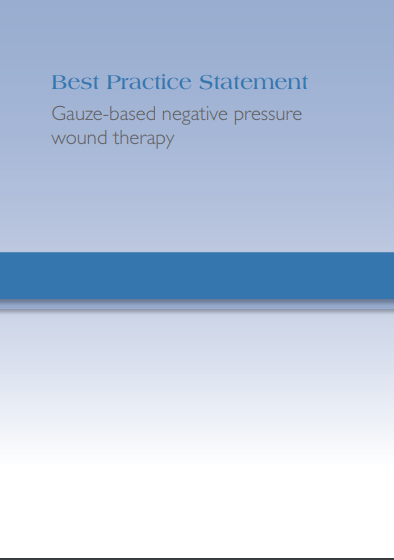
This Best Practice Statement has been developed in an attempt to take the first steps towards reaching a consensus on the use of gauze-based negative pressure wound therapy (NPWT). This technique, also known as the Chariker-Jeter method, was first published almost 20 years ago (Chariker et al, 1989), but it has only recently been acknowledged […]
International Guidelines. Pressure ulcer prevention: prevalence and incidence in context. A consensus document
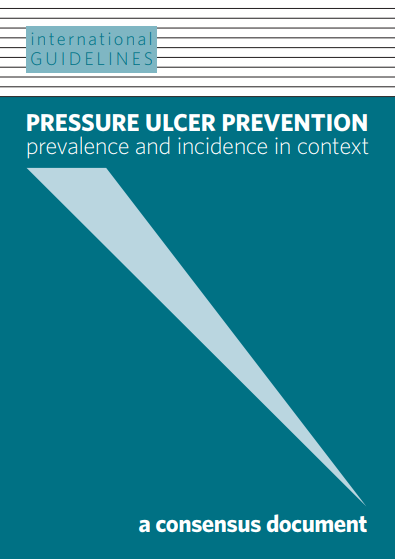
This document is of interest to all those involved in the field of pressure ulcers, including those who deliver healthcare, conduct research and develop policy. Supported by KCI – An Acelity Company
Compression in venous leg ulcers: a WUWHS consensus document
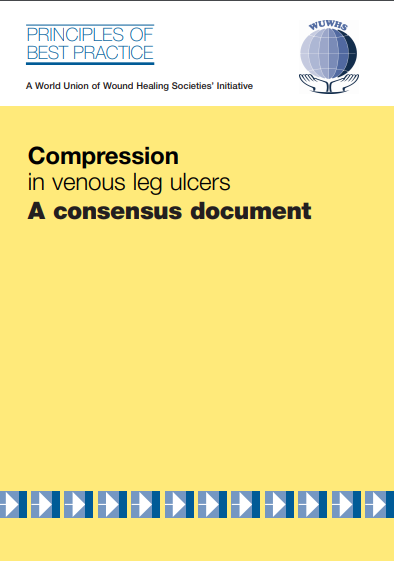
The principles presented in this document represent the consensus opinion of an international expert working group who met in June 2007. They build upon and are influenced by the recent monograph Chronic Venous Insufficiency and Venous Ulceration – Aetiology and Treatment, 2006. Supported by ConvaTec
Diagnostics and wounds: a WUWHS consensus document
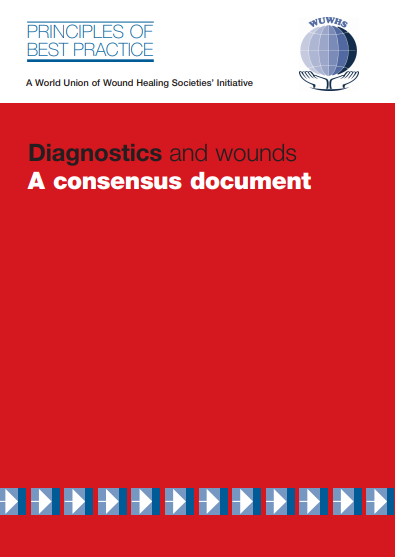
This consensus document has been adopted by the World Union of Wound Healing Societies as an educational initiative and provides principles of best practice on the emerging use of diagnostic technologies in the management of wounds. Supported by 3M
Wound infection in clinical practice: a WUWHS international consensus
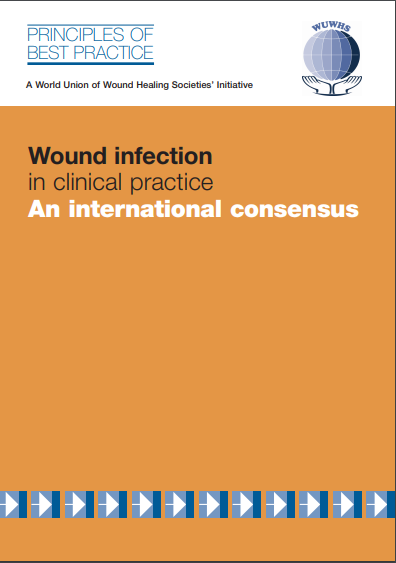
This consensus document has been adopted by the World Union of Wound Healing Societies as an educational initiative, and provides principles of best practice on wound infection in clinical practice. It represents the consensus opinion of an international panel of experts who met in 2007.
Vacuum assisted closure: recommendations for use. A WUWHS consensus document
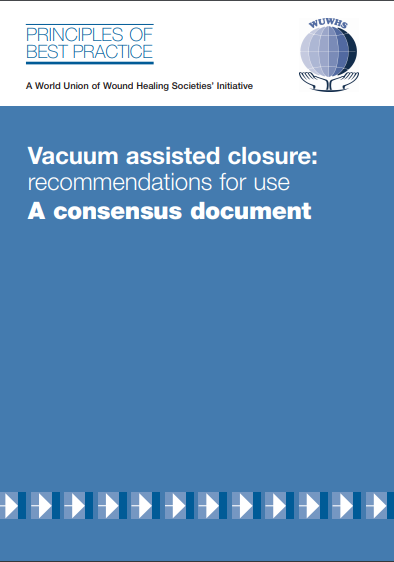
This consensus document has been adopted by the World Union of Wound Healing Societies as an educational initiative and provides principles of best practice on the use of vacuum assisted closure therapy in wound management. Supported by KCI – An Acelity Company
Minimising pain at wound dressing-related procedures: a WUWHS consensus document
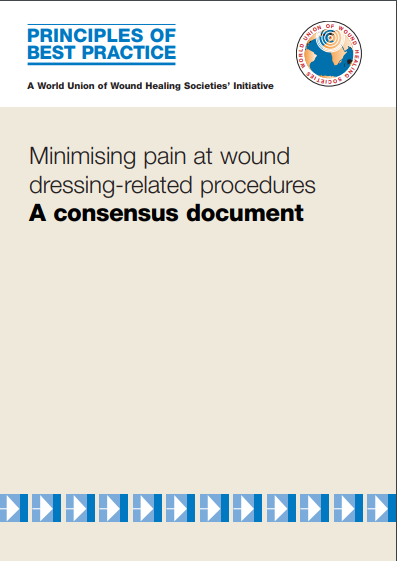
This consensus document has been adopted by the World Union of Wound Healing Societies as an educational initiative and provides principles for best practice on minimising pain at wound dressing-related procedures. Supported by Molnlycke Healthcare
Management of a large necrotic neck wound
<p>This case study follows the progress of a patient with a large necrotic neck wound and the challenges this presented for the care teams working in a large charitable hospital in Malaysia.</p>
Making a difference for patients and carers
In this guest editorial, Janine Michaelides discusses her motivation for improving the care of patients by raising the profile of tissue viability in Cyprus.
An evaluation of Allevyn Adhesive foam dressing
<p>A clinical in-market evaluation on 197 patients was carried out to assess the performance of the improved range of Allevyn hydrocellular foam dressings in clinical practice. The aim was to provide an insight into the uses and performance of the products in a clinical setting and on multiple indications.</p>
Biofilms: hard to detect, easy to underestimate, but most definitely here to stay
<p>Biofilms are found in most natural environments and are probably the most common form of microbial existence. They are relatively stable, three-dimensional communities of microbial cells encased in a complex mixture of extracellular polymers. Biofilms normally form at interfaces after adherence of free-living (planktonic) cells, which grow and divide to form clusters. The cells generate […]


